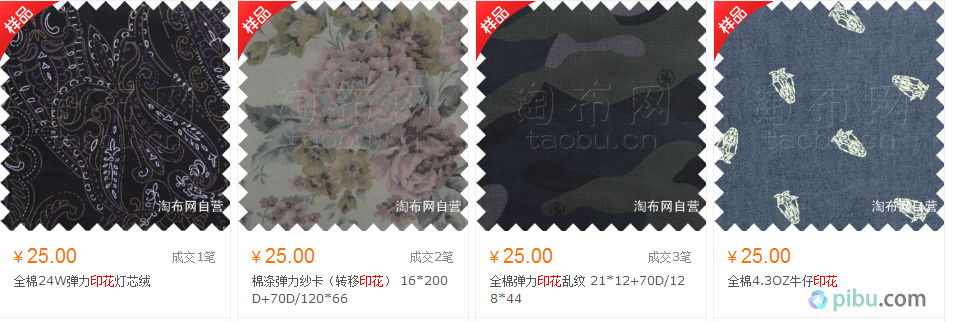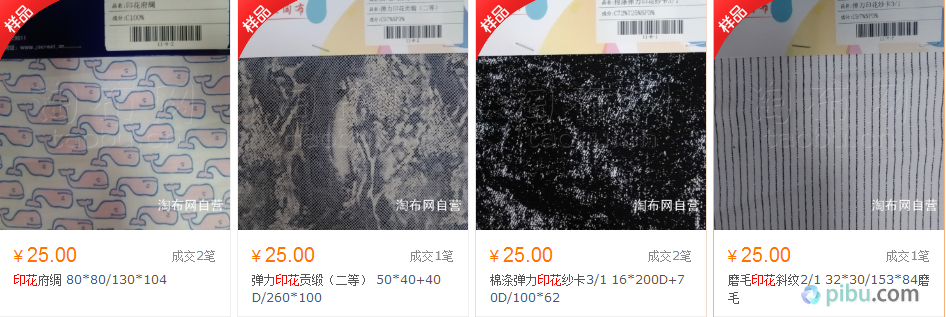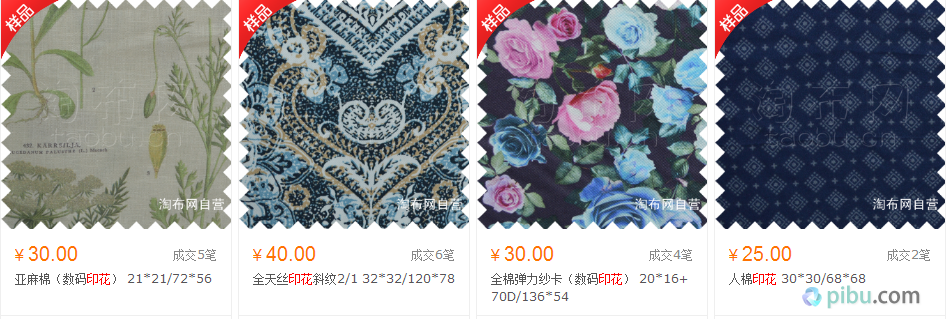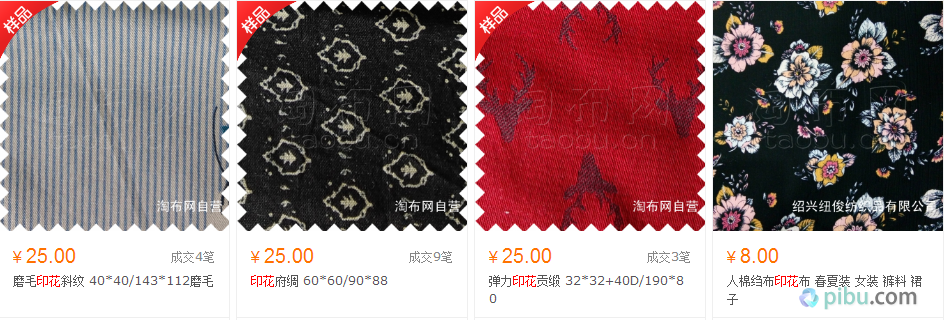There are several methods for textile printing. There are two types of printing methods that are of commercial importance: screen printing and cylinder printing. The third method is thermal transfer printing, which is of relatively low importance. Other printing methods that are rarely used in textile production include: wood form printing, wax enamel (ie, wax proofing) printing, yarn tie dye printing, and dye printing. Many textile printing plants use screen printing and roller printing to print fabrics. Most of the thermal transfer printing performed by printing plants is also printed in this way. First, screen printing Screen printing includes the preparation of printing screens, and printing screens (screens used in the printing process were once made of fine silk, and the process is called screen printing. Although silk screens are no longer used, printing The name “screen printing†is also often used in the process.) Made of fine mesh nylon, polyester or wire fabrics that are tight on wooden or metal frames. The screen fabric is coated with an opaque, non-porous film. Where there are patterns, to remove the opaque film, leaving a fine mesh screen, this area is where the pattern will be printed. Most commercial screen fabrics are first coated with a photosensitive film, and then the film is removed by photo-sensitization to reveal the pattern. Place a screen on the fabric to be printed for printing. The printing paste is poured into the printing frame and forced through the mesh of the screen through a scraper (a tool similar to a wiper on a car windshield). Each color in the print pattern requires a screen alone to print different colors. Example 3 Chromatic printing requires 3 net frames and 3 colors are printed on the fabric. In addition, the pattern of each color in the pattern must be accurately positioned on the screen so that the position of the pattern is accurate after printing, avoiding the phenomenon that green stems such as a rose are printed in the middle of the red petals. Print-to-flower refers to the industrial term for accurately printing all fabric colors on fabrics. Second, hand screen printing Manual screen printing is commercially produced on long benches (up to 60 yards in platen). The printed cloth roll is smoothly laid on the platen and the surface of the platen is pre-coated with a small amount of sticky material. The printing worker then continuously moves the frame by hand along the entire platen, printing one frame at a time until the fabric is completely printed. Each frame corresponds to a print suit. This method produces 50-90 yards per hour. Commercial hand screen printing is also used extensively to print tailored clothing. In the garment printing process, the garment manufacturing process and the printing process are arranged together. Before sewing the pieces together, they print the custom or unique patterns on the pieces. Because the manual screen printing can make a large-scale frame for large flowers, the printing method can also print fabrics such as beach towels, novelty print aprons, curtains, and shower curtains. Manual screen printing is also used to print limited-edition, highly fashionable women's clothing and printed small-volume products for market exploration. Third, automatic screen printing Automatic screen printing (or flat screen printing) is faster than the manual screen except that the process is automated. Printed fabrics are transported through a wide rubber belt to the screen, and not (like manual screen printing) on ​​long tables. As with manual screen printing, automatic screen printing is also a batch rather than a continuous process. In this process, the fabric is moved under the screen, then stopped, and a screen scraper is used for scratching (automatic scraping). After scraping, the fabric continues to move under the next frame, and the production speed is about 500 yards per hour. . The automatic screen pad can only be used for the entire roll of fabric. Cropped garments are generally not printed in this way. As a commercial production process, production of automatic screen printing (referring to flat screen printing) is declining due to the preference for more efficient rotary screen printing. Fourth, rotary screen printing There are several important aspects of rotary screen printing that are different from other screen printing methods. Rotary screen printing, like the roller printing to be described in the next section, is a continuous process in which the printed fabric is conveyed by a wide rubber belt underneath the continuously moving cylindrical flower cylinder. Screen printing, rotary screen printing the fastest production speed, greater than 3,500 yards per hour. Use a seamless perforated metal mesh or plastic net. The largest circular net circumference is greater than 40 inches, so the largest flower back size is also greater than 40 inches. More than 20 colored rotary screen printing machines have also been produced. This printing method is slowly replacing roller printing. Fifth, roller printing Drum printing, like newspaper printing, is a high-speed process that can produce more than 6,000 yards of printed fabric per hour. This method is also called mechanical printing. In roller printing, the pattern is printed on the fabric by engraving a copper cylinder (or roller). The copper rollers can be engraved with tightly arranged fine lines that can print very detailed and soft patterns. For example, the fine, dense Pellisley vortex print is a type of pattern printed by roller printing. Necklace engraving should be exactly the same as the pattern designer's design artwork. Each design needs an engraving roller. (In specific textile printing processing, five-roll printing, six-roll printing, etc. are commonly used to indicate five-color printing or six-color printing. Drum printing is the production method that uses the least amount of large-volume printing, and the output continues to decline each year. The batch size of the pattern is not very large, and this method is not economical.In most cases, roller preparation and equipment adjustment are expensive and costly, making printing using this method less economical. However, roller printing is often used to have The very thin lines of prints such as the Paisley vortex tweed print and the main prints that are printed in many seasons. The size of the engraving flower cylinder depends on the printing machine and the printing pattern. Most printers can be configured with a 16-inch flower cylinder, which means that the size of the print pattern cannot exceed 16 inches. The width of the stencil should be slightly larger than the width of the printed fabric so that the fabric, including the hem, can be completely printed with the pattern. Once prepared, the printing cylinder can be used almost unlimitedly, and generally there is no problem printing a few million yards of fabric. Sixth, screen printing and drum printing fixed color Once the fabric is screened or roller-printed, the color is positioned on the cloth and further processing is required to fix it. The dye used as a print colorant must be able to bind to the fibers. The step of fixing the printed fabric in a vapor at a temperature close to or sometimes exceeding the boiling point of water (high pressure steaming) is called steaming. After steaming, the fabric is passed through a soap bath to remove print paste and other materials used in the color paste formulation. Finally, the fabric goes through several washing and drying steps. It takes a lot of water and heat to consume in the printing process. If a pigment, not a dye, is used in the print, the fabric needs to be subjected to a dry heat treatment up to about 210° C. to cure the fixed coating resin. This step is called baking and no longer requires further processing. Printing with pigments instead of dyes can save a lot of water and energy. The textile industry generally refers to dye-printed fabrics as wet printed fabrics, while pigment-printed fabrics refer to dry printed fabrics. This is because wet printed fabrics require steam steaming and subsequent water washing as part of the overall process. On the other hand, calico fabric simply requires dry heat curing as part of the coloring process and does not require water washing. Seven, thermal transfer printing The principle of thermal transfer printing is somewhat similar to the transfer printing process. In thermal transfer printing, patterns are first printed on paper with disperse dyes and printing inks, and then printed paper (also known as transfer paper) is stored for use by textile printing plants. In the case of fabric printing, the transfer paper is passed through a thermal transfer printing machine so that the transfer paper and the unprinted face are stuck together and passed through the machine at approximately 210°C (400 t). Under such high temperature, the dye on the transfer paper sublimates and transfers. On the fabric, the printing process is completed and no further processing is required. The process is relatively simple and does not require the specialized knowledge necessary for roller printing or rotary screen printing. Disperse dyes are the only dyes that can be sublimed. In a sense, they are the only dyes that can be used for thermal transfer printing. Therefore, this process can only be used on fabrics that have affinity for such dyes, including acetate fibers and acrylics. Nitrile fiber, polyamide fiber (nylon) and polyester fiber. In thermal transfer printing, fabric printing plants purchase this type of printing paper from highly specialized printing paper manufacturers. The transfer paper can be printed according to the requirements of the pattern designer and the customer (ready-made patterns can also be used for transfer printing). Thermal transfer printing can be used to print clothing (such as border printing, chest pocket embroidery, etc.), in which case special designs are used. Thermal transfer printing stands out from the printing process as a complete fabric printing method, thus eliminating the need to use large and expensive dryers, steamers, washing machines, and tenters. Since the printed paper can be inspected before printing, this eliminates inaccuracies and other illnesses. Therefore, thermal transfer printing fabrics rarely appear defective. The speed of production of continuous thermal transfer printing is about 250 yards per hour. Eight, jet printing and its development prospects Jet printing is to spray small droplets of dye and stay in the precise position of the fabric. The nozzle and pattern used to jet the dye can be controlled by computer and can obtain complicated patterns and precise pattern cycles. Jet printing eliminates the delays and cost increases caused by engraving cylinders and screens. This is a competitive advantage in the rapidly changing textile market. The jet printing system is flexible and fast, and can quickly transfer from one pattern to another. The printed fabric is free from tension (that is, it will not be twisted due to stretching) and the fabric surface will not be pressed, thus eliminating potential problems such as fuzzing or napping of the fabric. However, this process cannot print fine patterns and the outline of the pattern is blurred. Jet printing is almost always used for carpet printing. It is not an important process for textile printing. However, with the research and development of mechanical and electronic control technologies, this situation may change. At present, several jet printing machines have been put into textile printing production, including the millitron liquid jet printing machine developed by millilin and its company. The above describes eight kinds of printing methods. From the word count, many people certainly cannot see. In fact, these are nothing more than to buy good calico. In fact, if you want to buy quality calico, you may wish to look at Amoy net. Amoy cloth net spot sales in the printed cloth, not only own sample cloth supermarket sample cloth, as well as various high-quality enterprises settled in the cloth, more selective, cost-effective. Heartbeat is better than action. Sunglasses can prevent ultraviolet rays from sunlight. Ultraviolet rays can damage the cornea and retina, and sunglasses can completely eliminate ultraviolet radiation. Sunglasses can prevent strong light. Light reflected from the sun will damage the retina. High quality sunglasses can filter up to 97% of the eye rays to avoid injury. Sunglasses can prevent glare. It can reflect large amounts of light, and the bright spots that it produces will disturb the line of sight or hide objects. Sunglasses can completely eliminate such glare with polarizing technology. There is also the role of beauty decoration. Sunglasses are an indispensable decoration for fashion. Sun Glasses,Colorful Sun Glasses,Reflective Sun Glasses,Unisex Sun Glasses China Guangdong Shenzhen city Omelle glasses Co., Ltd. , https://www.omelleoptical.com





For more content, please follow this site